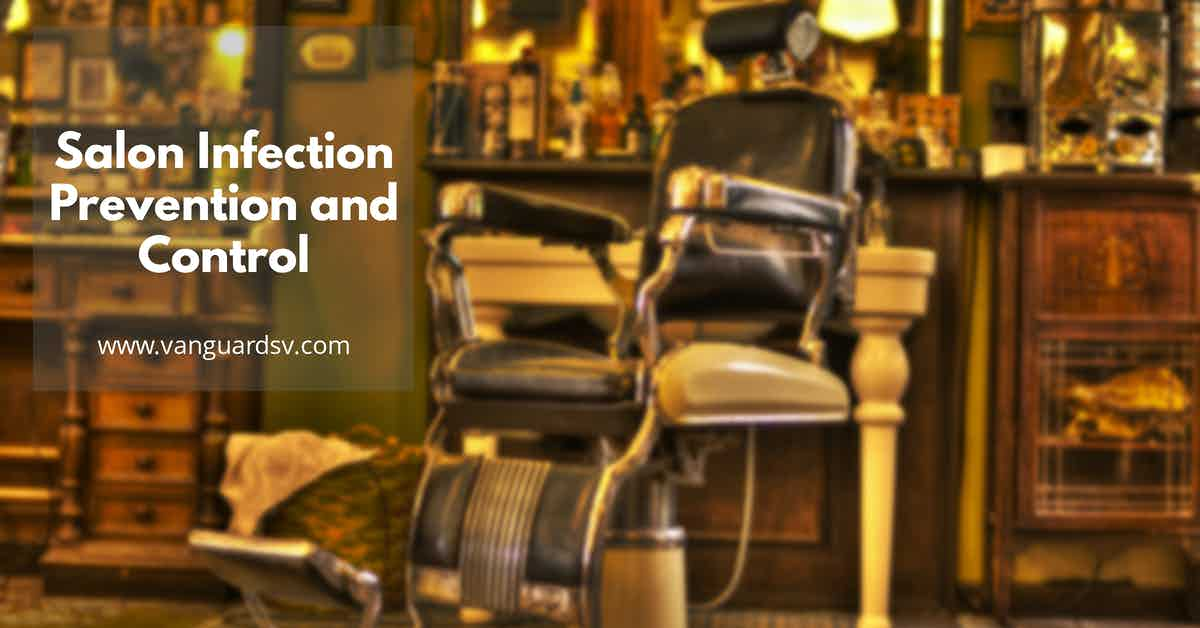Preventing the spread and transmission of pathogenic bacteria and viruses in salons and barbershops is necessary for ensuring the health and safety of workers and customers, protecting the business's investment in the built environment, and adhering to California State Public Health regulations and licensing requirements.

What You Need to Know Regarding the Control of Infection in the Cosmetology Industry
Maintaining a sanitary salon or barbershop is required by licensing bodies and local, State, and Federal regulations.
Failing to properly clean and disinfect salon surfaces, which function as reservoirs for germs and bacteria, and salon tools, which serve as transmission agents, can result in steep fines and the loss of your license and business.
We all understand the need for a medical or dental office to maintain sterile equipment and supplies, yet many of us are unaware that salon owners and cosmetologists must also meet the same standards.
A clean and sanitary salon, and disinfected tools not only safeguard you and your clients but also ensures compliance with federal and state laws and regulations.
Infectious material transferred from one person to another can result in skin infections and blood poisoning, and so can unsanitary implements, likes combs, nail files, and shears.
This is because implements act as a vehicle, allowing pathogenic organisms, like microbes and germs, to be transmitted between people.
Common Pathogenic Bacteria Found in Salons and Barber Shops
The surfaces and tools in salons and barbershops are often covered in various types of bacteria, much of which is harmless to humans.
However, in that microbial soup, dangerous and often deadly pathogenic bacteria commonly lurk, including:
- Staphylococci - Potentially deadly antibiotic-resistant bacteria that causes major skin infections.
- Streptococci - Deadly bacteria responsible for scarlet fever and impetigo.
- Diplococci - Potentially deadly bacteria that causes uterine and cervical infections.
- Gonococci - Bacteria that cause gonorrhea.
- Meningococci - Bacteria that causes menengitis.
- Bacilli - Bacteria that lead to a host of diseases, including tetanus, influenza, diphtheria, typhoid, and tuberculosis.
General Facility Cleaning and Health Checklist for Salons and Barbershops
The California Department of Public Health has updated its guidelines for maintaining and improving salon and barbershop facility health to protect against the ongoing spread of COVID-19 and other known pathogens and pathogenic bacteria commonly transmitted in cosmetology businesses.
- Where possible, upgrade air filtration and HVAC systems.
- Clean at the beginning of each shift and between customers, paying close attention to high-traffic areas.
- Routinely disinfect high-touch surfaces throughout the day in accordance with facility foot traffic.
- Install touchless technologies in the restroom--flushers, faucets, soap dispensers, paper towel dispensers--and at the front desk (contactless payment systems).
- Regularly remove restroom clutter.
- Refill restroom soap, hand sanitizer, and paper products regularly.
- Thoroughly clean the reception area, display areas, workstations, equipment, tools, and all high-contact surfaces at the start and end of the day.
- Dispose of single-use items immediately.
- Use closed containers to store used linens.
- Clean the floors before opening and after closing with a HEPA filtered vacuum.
- Only use products approved by the US Environmental Protection Agency against SARS-CoV-2 to clean and disinfect surfaces, equipment, and tools.
Source:
References & Resources
- Salon Infection Control Guidelines
- Infection Control in the Salon
- Establishment Guidelines
- Infection Protection
Takeaway
Maintaining highly sanitary salons and barbershops is critical to the business's success, especially coming out of the recent pandemic.
While skilled salon workers typically are, and should be, responsible for the cleaning and disinfection of their personal tools, requiring them to maintain the remainder of the facilities surfaces at a level required by the California Department of Public Health is likely a bridge too far.
Your organization will be well-served and benefit greatly by employing the services of a trained and experienced janitorial service provider team.
Outsourcing is a proven method for onboarding increasingly in-demand sustainable cleaning for health services, tools, and expertise for a fraction of the cost of maintaining a similar service in-house.
If you would like more information regarding the effectiveness of high-performance infection prevention and control measures, or if you would like to schedule a free, no-obligation onsite assessment of your facility's custodial needs, contact us today for a free quote!
In Bakersfield, CA, call (661) 437-3253
In Fresno, CA, call (559) 206-1059
In Valencia CA, or Santa Clarita CA, call (661) 437-3253
In Palmdale, CA or Lancaster, CA, call (661) 371-4756

